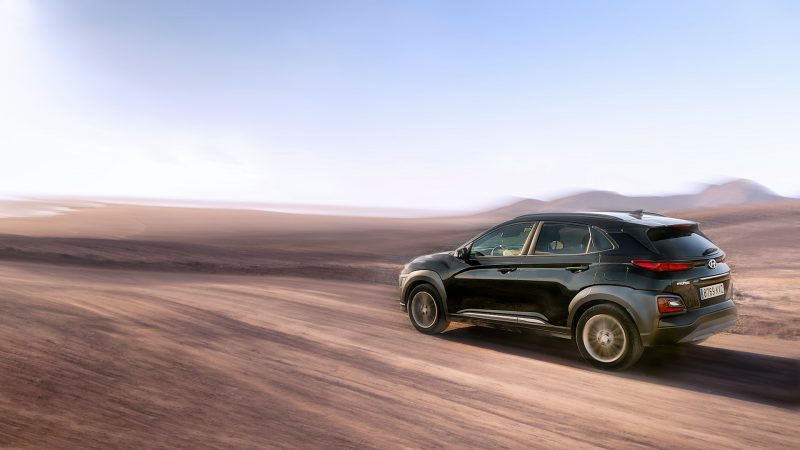Contrasting Fortunes in the Automotive World: The Ineos Grenadier and Skoda’s Electric Triumph

When Land Rover finally retired the original Defender, it left a void that petrochemicals billionaire Sir Jim Ratcliffe was desperate to fill. A dedicated Defender enthusiast, Ratcliffe initially approached Jaguar Land Rover with an offer to purchase the design rights and production tooling to keep the icon alive. JLR refused, sparking a chain of events that led to the creation of the Ineos Grenadier. Only in 2017 did Ratcliffe unveil his plans to build an uncompromising, old-school off-roader from scratch, a project that has remained firmly in the limelight ever since.
The development journey was anything but straightforward. While JLR and Ineos Automotive were locked in a legal dispute over the trademark rights to the Defender’s distinctive shape—a battle JLR eventually lost—Ineos forged ahead. They appointed Hans-Peter Pessler as COO, a man with significant pedigree from Austrian firm Magna Steyr, where he had previously overseen the development of the Mercedes G-Class. Although initial plans suggested a factory in South Wales, production eventually settled at the modern Hambach plant in eastern France, a site previously used by Daimler to build Smart cars.
On the Road and In the Mud
Having driven the Grenadier in both prototype and production forms, including an ascent of the formidable Schöckl mountain trail, the verdict on its capability is clear. Once liberated from the tarmac, this machine matches, and perhaps even outperforms, the vehicle that inspired it. For many enthusiasts, that alone signals a mission accomplished. However, a broader road test reveals a vehicle of distinct duality.
The Grenadier is undeniably a characterful machine, its BMW-sourced six-cylinder petrol and diesel powertrains making light work of the car’s mammoth chassis via an eight-speed automatic transmission. Yet, the commitment to off-road purity comes with compromises. The steering is tuned entirely for the rough stuff, which results in less-than-ideal ergonomics for right-hand drive models and handling that requires concentration on public highways. While the visibility is superb and the ride quality surprisingly compliant, the utilitarian nature of the vehicle might make the asking price difficult to swallow for casual buyers.
Specifications and Future Outlook
Ineos offers the Grenadier in three distinct flavours: the commercial Utility, the Quartermaster crew-cab pick-up, and the five-seat Station Wagon. Pricing begins at £64,500 for the two-seat Utility diesel, rising to £76,535 for the Station Wagon models. Buyers generally opt for the petrol variants by a ratio of two-to-one, choosing between the rugged ‘Trialmaster’ trim, with its raised air intake and steel wheels, or the more refined ‘Fieldmaster,’ which features safari windows and alloy wheels. While the current focus is on internal combustion, CEO Lynn Calder has confirmed that a pure-electric version is currently in the works.
A New Benchmark for 2026
While Ineos looks to the past for inspiration, the German automotive industry has firmly cast its vote for the future. Moving from the rugged trails of the Schöckl to the polished floors of the Laurin & Klement Campus in Mladá Boleslav, the Skoda Elroq has been crowned the “German Car of the Year” (GCOTY) for 2026. In a decision made by a jury of roughly 25 German-speaking motoring journalists and supported by 15 international experts, the compact electric vehicle triumphed over competitors from every segment to secure the overall victory.
The Winning Formula
Klaus Zellmer, Chairman of the Board at Skoda, expressed his delight at the accolade, noting that the award validates the team’s hard work. He remarked that the jurors had truly captured the “nerve of the time,” a sentiment backed by sales figures; in October, the Elroq was Germany’s best-selling electric vehicle. For customers, Zellmer noted, the Elroq had effectively already won “Car of the Year” simply by being their preferred daily driver.
To claim the overall title, the Elroq first had to dominate the Compact class (for vehicles with a base price up to €40,000). It faced stiff competition from other category winners, including the Dacia Bigster in the Budget category and the Hyundai Ioniq 9 in the Premium sector. At the higher end of the market, the Cadillac Vistiq took the Luxury class honours, while the Lucid Air Sapphire secured the Performance category win.
Electric Dominance Continues
The Elroq’s victory marks the third time a vehicle based on the Modular Electric Drive Matrix (MEB) has taken the top prize, underscoring the platform’s enduring relevance. A look back at the history of the GCOTY awards paints a vivid picture of the industry’s rapid electrification. From the Jaguar I-Pace in 2019 to the Porsche Taycan and Hyundai Ioniq 5 in subsequent years, electric mobility has consistently impressed the judges. With the Volkswagen ID.7 taking the title in 2024 and the BMW 5 Series/i5 in 2025, the Skoda Elroq joins a prestigious lineage, proving that in the modern market, accessibility and electric efficiency are currently the most prized attributes of all.

